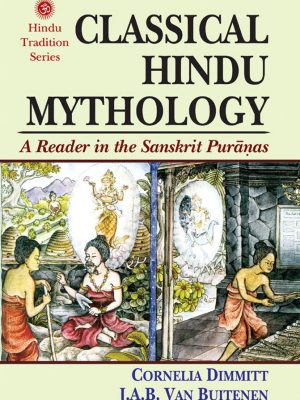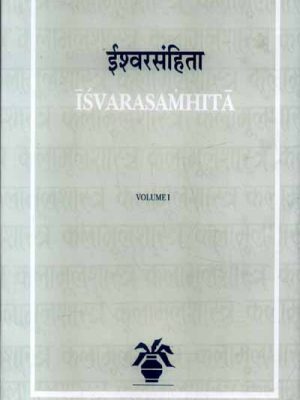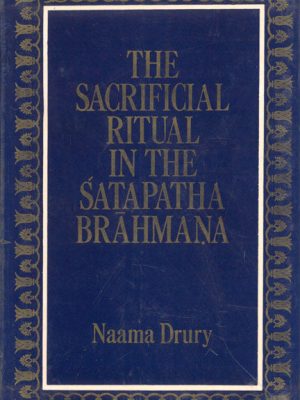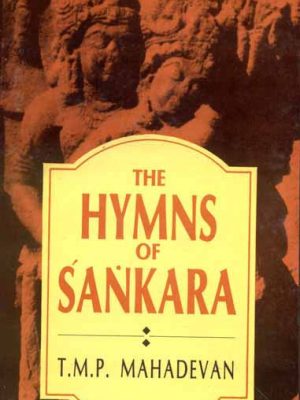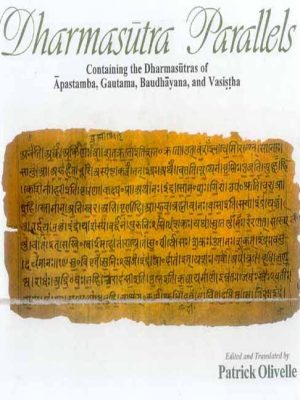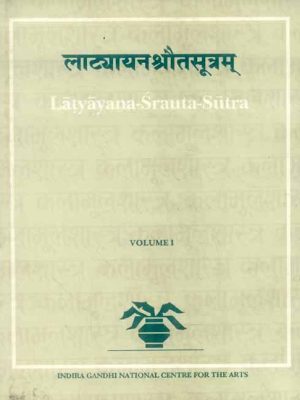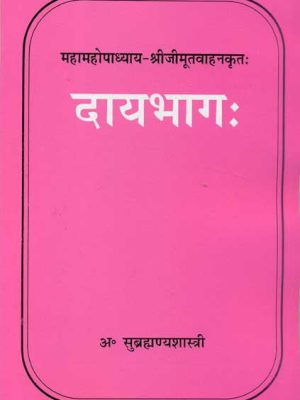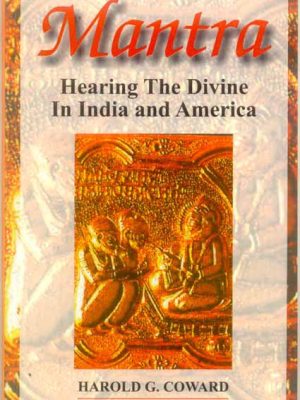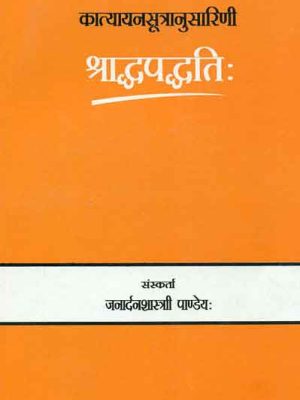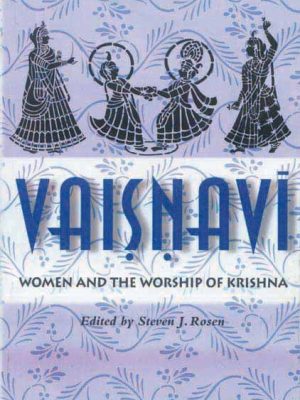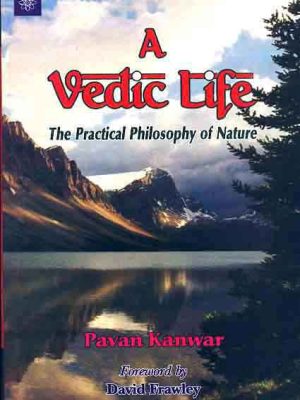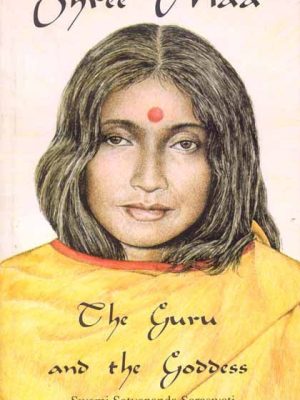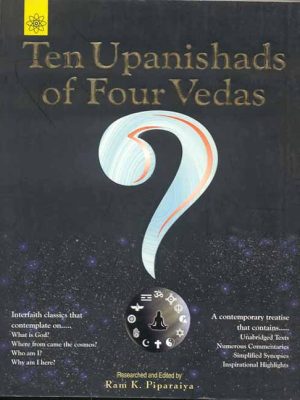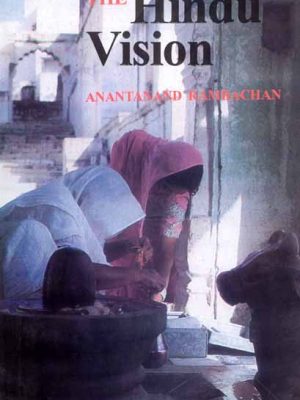Hinduism
Hinduism is one of the oldest religions. As time passes most people are growing away from their old roots. Our collection of books helps you live the glory of Hinduism. These books help you understand the mythological and spiritual tradition of Hinduism. It not only helps you revive the culture but also teaches you about history.
-
Classical Hindu Mythology: A Reader in the Sanskrit Puranas
Classical Hindu Mythology: A Reader in the Sanskrit Puranas
The Mahapuranas are the texts that best represent the conventional wisdom of Hindu mythology. This anthology includes recent translations of these stories, of which only a handful have ever been made accessible in English previously, and as a result, it makes available a substantial new section of Hindu mythology.
There are six different chapters in all in this book. Myths are told in “Origins” that are associated with creation, time, and space. The book “Seers, Kings, and Supernaturals” tells stories of rivers, trees, animals, demons, and mankind, most notably heroes and wise men. Krsna, Visnu, and Siva each have their own chapter to devote to debunking the many myths that circulate about them. The tales of the wives and lovers of the gods are told in the chapter titled “The Goddess.” The chapter also discusses Kali, the fierce goddess of conflict.
In the introductions that they have written, the editors have provided not only a historical context in which to analyse Hindu mythology but also a comprehensive examination of the sources upon which it is based. The several names that were originally given. The editors have included a comprehensive lexicon in order to make these names more understandable.
Author
Cornelia Dimmitt
₹995.00 -
Isvarasamhita (Set of 5 Vols.)
Isvarasamhita (Set of 5 Vols.)
Both Vaikhanasa and Pancaratra are very significant schools of ritual and philosophy that emerged as a direct result of Visnuism’s influence. The Isvarasamhita is an essential piece of literature for followers of the Pancaratra school of Visnuism.
Pancaratra is characterised by a more open and permissive approach, in contrast to Vaikhanasa, which has a character that is relatively archaic and relies more heavily on the Vedic tradition for its repertoire of mantras that are used in religious rites and ceremonies. Pancaratra’s repertoire of mantras can be found here. It has a text tradition that dates back around two thousand years, which has also been the primary basis for the Visistadvaita philosophy that was developed by Ramanuja (between the 11th and 12th centuries). Worship is performed in line with the instructions provided in one of the significant Pancaratra Samhitas at the vast majority of Vaisnava temples located in southern India, particularly in the state of Tamilnadu.
At the Narayanasvami temple in Melkote, a strict adherence to the Isvarasamhita can be seen throughout the daily puja ritual as well as during the many other types of religious celebrations that take place there. This is because the Isvarasamhita is an essential scripture of the Pancaratra School. Given that it is mentioned in Shri Yamunacarya’s Agama Pramanya, we may confidently place it somewhere between the 8th and 9th centuries at the very least. It is said to be a simpler and shorter version of the older sattvatasamhita of this school, which is the earliest available work of Pancaratra and is regarded as one of three ratnas, (Jewels), along with the Pauskara- and Jaya Samhitas. In other words, it is the simplest and shortest version of the older sattvatasamhita of this school. The Isvarasamhita contains a description of the rites, rituals, and ceremonies that take place (or ought to take place) at a Vaisnava temple. This description is spread out across 25 lengthy Adhyayas.
Palm leaf Because of its reputation for genuineness, the Narayanasvami temple in Melkote was the primary source for the Isvarasamhita manuscripts that were acquired. We have included attached to the text the gloss that was written by Alasimha Bhatta in the early 19th century. This gloss will be of assistance in understanding some terms that are difficult to understand or are sectarian in nature. The current researchers who are working on the philosophy, ritual, and iconography of Visnuism will find the English translation helpful, thus it has been supplied on the page facing them (to the right).
It should come as no surprise that the study of art cannot proceed without first acquiring a sufficient familiarity with ritual.
Author
V. Varadachari
₹6,000.00Isvarasamhita (Set of 5 Vols.)
₹6,000.00 -
The Sacrificial Ritual in the Satapatha Brahmana
The Sacrificial Ritual in the Satapatha Brahmana
The Sacrificial Ritual in the Satapatha Brahmana
Author
Naama Drury
₹350.00 -
The Hymns of Sankara
The Hymns of Sankara
In conjunction with Sri Sankara Jayanti festivities at Sankara Vihara, Ayanavaram, Madras, every year it has been a regular habit to put out some modest publication based on the works of the Great Master as also works about him under the term ‘Jayanti Series’. The current work falls within such category.
Besides composing his well-known commentaries and Advaita manuals, Adi Sankara penned a great number of powerful hymns filled with intense devotion. Were this reality well known, the complaint brought against Sankara’s Advaita, viz., that there is no space for bhakti in the path of jnana would not have been made.
This book contains several of his hymns. At the conclusion Totakacarya’s well-known song to Sankara is added.
The material is offered in Devanagari script with transliteration, English translation and commentary.
Author
Dr. T.M.P. Mahadevan
₹495.00The Hymns of Sankara
₹495.00 -
Vediki Prakriya: Shodhpurna Alochanatamak Vistrit Hindi Vyakhya
Vediki Prakriya: Shodhpurna Alochanatamak Vistrit Hindi Vyakhya
Vediki Prakriya: Shodhpurna Alochanatamak Vistrit Hindi Vyakhya
About the Author(s)
Damodar Mehto
₹395.00 -
Dharmasutra Parallels: Containing the Dharmasutras of Apastamba, Gautama, Baudhayana and Vasistha
Dharmasutra Parallels: Containing the Dharmasutras of Apastamba, Gautama, Baudhayana and Vasistha
The Dharmasutra Parallels provide a synoptic presentation of the passages that may be found in the four Dharmasutras of Apastamba. The teachings of Gautama, Baudhayana, and Vasistha all focus on the same concepts. The Dharmasutras are the earliest complete legal code from ancient India that has survived to the current day. An in-depth examination of these early legal treatises is required if we are to have any hope of comprehending not only the legal history of the three or four centuries prior to the common era, but also the cultural and religious history of that time period. This was the time when many of the characteristics that are typically associated with Indian civilization began to take shape during that era.
Author
Patrick Olivelle
₹1,495.00 -
Vedic Hermeneutics
Vedic Hermeneutics
This book asserts that the Veda is what makes known knowledge inaccessible to empirical means of knowledge and what does not contradict what is known through history, science, reason, and common sense. Additionally, it states that the Veda is what does not contradict what is known through common sense. Only information that is relevant to Dharma and Brahman is included in its content. It is possible to correctly comprehend it by using the concepts that have been outlined by the Nirukta and the two Mimamsas.
What the most influential tradition recognises as the Veda is, in point of fact, the Veda. A wise person once remarked, “The meaning of its earlier section is lighted by the smrtis, and the meaning of its latter portion is lit by the itihasa-puranas.” Understanding its significance requires, among other things, familiarity with the bhasyas written by Madhva, Sayana, and Atmananda. This study makes an effort to demonstrate that this is the case. Both the assertion of the oneness of Being and the awareness of that unity may be found in the Rgveda. The Yajurveda imparts knowledge to us about the deed that is superior. Chanting and meditation on what the first Veda praises or depicts is at the heart of the Samaveda. The Atharvaveda proposes that being and man are quite similar to one another, if not identical.
₹450.00Vedic Hermeneutics
₹450.00 -
Madhyanindenkramapath (Pratham Bhag)
Madhyanindenkramapath (Pratham Bhag)
A Brief Synopsis of the Book Madhyanindenkramapath (Pratham Bhag) “Blossoms of Friendship depicts each one of Vimala Thakar’s speeches as a delectable morsel, so preserving the ageless quality of Thakar’s words. The fifth chapter, “The Silence of Meditation,” is my favourite because it so eloquently emphasises the need of spiritual practise in modern society, even going so far as to call it a necessity.”
About the Author(s)
Yudhishthir Mimansak
₹1,245.00Madhyanindenkramapath (Pratham Bhag)
₹1,245.00 -
In the Image of Fire: The Vedic Experience of Heat
In the Image of Fire: The Vedic Experience of Heat
₹695.00 -
Latyayana Srauta Sutra (3 Vols.)
Latyayana Srauta Sutra (3 Vols.)
The Srauta Sutras are an essential part of the larger body of literature known as the Sutras. They are known for distilling the substance of the Vedic scriptures known as the Samhitas and the Brahmanas into a condensed form, which helps to reinforce India’s long-standing custom of offering sacrifices. The Yajurveda and the Samaveda, as well as the Rgveda, which is known to have developed a variety of recensions with differences in utterance and practise, are also important to the sacrificial tradition in India, which is widely known to be based primarily on the Rgveda, which is the oldest book that was written by humans.
₹2,200.00Latyayana Srauta Sutra (3 Vols.)
₹2,200.00 -
Daay Bhag: Mahamahopadhyay-Shriji Mootwahankrit:
Daay Bhag: Mahamahopadhyay-Shriji Mootwahankrit:
Daay Bhag: Mahamahopadhyay-Shriji Mootwahankrit
About the Author(s)
A. Subrahmanya Shastri
₹75.00 -
Mantra
Mantra
The encounter with the holy in India is a synthesis of three distinct aspects: performance, music, and visual presentation. One of three works that make up a trilogy that also includes Diana Eck’s Darsan: An introduction to the use of sound, or mantra, in the practise of Indian religion, Seeing the Divine in India gives an overview of this aspect of Indian spirituality. The use of mantra, which may take the form of prayers, rituals, and chants, is ingrained in the everyday practise of Indian religion, whether it is carried out at a temple or at home. This book explores the ability of mantra to bring about a shift in one’s state of awareness. It incorporates allusions to Buddhist, Hindu, Sikh, and Muslim as well as Sufi and Sufi traditions as it investigates the use and theory of mantra throughout a number of different religious systems, such as the Patanjali sutras and tantra. This updated version includes additional chapters on the use of holy sound among groups of Hindus and Sikhs who have migrated to North America, as well as on the practise of yoga and mantra in North America by people who are not of Indian descent.
₹245.00Mantra
₹245.00 -
Shradhpaddhti: Katyayansutranusarini
Shradhpaddhti: Katyayansutranusarini
Shradhpaddhti: Katyayansutranusarini
Author
Janardan Shastri Pandey
₹495.00 -
Vaisnavi: Women and the Worship of Krishna
Vaisnavi: Women and the Worship of Krishna
This collection tackles the sensitive topic of gender roles in religious traditions with openness and transparency, with a particular emphasis on Vaishnavism, one of the oldest and most textually-rich religious traditions practised by humans. Steven J. Rosen has compiled a collection of eight articles written by prominent scholars, poets, and practitioners. These individuals offer light on the lives and teachings of certain female saints over the course of history. This book also discusses fundamental ideas pertaining to the worship of Krishna and how such principles effect both men’s and women’s lives in today’s society.
About
Steven Rosen
₹525.00 -
Vaisnavism: Contemporary Scholars Discuss the Gaudiya Tradition
Vaisnavism: Contemporary Scholars Discuss the Gaudiya Tradition
The topic of discussion in Vaisnavism: Contemporary Scholars Discuss the Gaudiya Tradition is an old religious tradition as seen through the lens of current study. Steven J. Rosen and twenty-five eminent scholars examine the different facets of Gaudiya via a series of stimulating debates in this book. VAisnavism—its
literature, historical progression, theological analysis, and religious practise. As the researchers share the knowledge they’ve acquired over the course of their years of study, thoughtful and, indeed, fascinating viewpoints emerge. This ancient East Indian tradition is brought to light through exploring topics such as the nature of the Absolute, devotional poetry, holy space, mystical states, and sound theology. These topics bring to light the rich beauty and profoundness of this tradition.
₹495.00 -
A Vedic Life: The Practical Philosophy of Nature
A Vedic Life: The Practical Philosophy of Nature
In Sanskrit, the word veda refers to knowledge, and the ancient tradition known as the Vedic tradition is linked with India and focuses primarily on knowledge. It is not about any one kind of information, but rather about knowledge in general as a tool for comprehending and experiencing reality. As a result, it is a tradition that does not restrict itself to one one system. Instead, it takes a perspective that is open and inclusive, and it believes that a reasonable approach is very necessary. However, it does not restrict itself to logic alone; rather, it also examines an approach that is focused on inner perception, since this is a vital aspect of both our knowledge and our experience of reality. The book titled “A Vedic Life” is a presentation that outlines some of the most significant aspects of the Vedic method of approaching information. It does this not for any specific religious or sectarian motive, but rather for the sake of knowledge, as indicated above, and as a result, it is anticipated that it will be able to contribute something to a range of opinions. Although the Vedas (books of wisdom) are intimately connected with the Vedic approach to knowledge because they exemplify its open and inclusive approach to information, the Vedic approach to knowledge is not limited to any one individual or book, as was previously noted. This aspect of the Vedic writings is expressed in a phrase from the Rig Veda, one of the core Vedic books, which states that “reality is one, but the knowledgeable call it by numerous names.”
The Vedic tradition is not the only one that has an open attitude toward knowledge; nonetheless, it is perhaps the most in-depth and oldest system of its kind. It is also the best maintained, despite the fact that a significant amount of its knowledge has been lost in modern times. Despite the fact that many of its pioneering philosophers had a completely different perspective, the system of contemporary science obviously clearly strives to the same ends; nevertheless, it does not truly recognise any other kind of thought than that which is founded on reason and sensory evidence. This book will examine the benefits and drawbacks of the methodology that is being used by contemporary science, particularly in light of the Vedic methodology for doing scientific research.
Because Sanskrit being the primary language used throughout the Vedic period, the book makes extensive use of Sanskrit words and phrases throughout its content. Once again, this is not due to any kind of ceremonial purpose; rather, it is due to the fact that the Sanskrit language used in the Vedas has a very well developed vocabulary in relation to psychology and philosophy. In addition, an effort will be made to show that Sanskrit is a natural language for the purpose of acquiring information, and this effort will be documented.
₹225.00 -
Aum Hindutvam: Daily Religious Rites of the Hindus
Aum Hindutvam: Daily Religious Rites of the Hindus
The author negates some of the very old concepts, viz., that females and
Shudras, and people who have not undergone the Upanayana Samskaras have no
access to Vedas or they should not perform Vedic rituals. He insists that
‘all religious observances of a man, if devoid of right conduct, are of no
avail. Right conduct constitutes an important element of education and
civilization. In his opinion Hindus will have to develop the
all-comprehensive idea of Hindu Dharma in and through their lives and
activities. Their welfare lies in the Vedic prayers and practices.
Those who are interested in Hindu Dharma, and those who want to know about
its rituals will find the present work indispensable. The author deals with
the religious practices, observances and rituals. When, how, and where
certain rituals are to be performed, is clearly discussed. Benefits of
Divine Communion are given special emphasis.
About the Author(s)
SWAMI VEDANANDA
₹195.00 -
Sri Maa the Guru and the Goddess
Sri Maa the Guru and the Goddess
There are three books included in The Guru and the Goddess that may be used for study and practise (sadhana). The first one is a translation of the Kasyapa Sutras along with a commentary on them. The second portion contains a Sanskrit text of the Guru Gita as well as a translation of it. The Lalita Trisati Stotram is presented in its original Sanskrit form and then translated into English in the third portion.
About the Author(s)
Swami Satyananda
₹465.00Sri Maa the Guru and the Goddess
₹465.00 -
Ten Upanishads Of Four Vedas
Ten Upanishads Of Four Vedas
Ten Upanishads Of Four Vedas,Ram K.Piparaiya: A modern treatise that includes whole texts, extensive commentaries, condensed summaries, and pivotal points of inspiration. This book is a valuable compilation of the original Upanishadic writings as well as commentaries on those works. Classic works from a variety of faiths that provoke thought on. Who is God, exactly? Where did everything in the universe come from? Just who am I? Why am I in this place?
The Upanishads provide a chronicle of the human mind’s early voyages into the realm of the unknown via contemplation.
At the very least, a few centuries separated many of the nameless searchers from famous teachers and prophets such as Lao-Tzu, Confucius, Socrates, Zoroaster, Buddha, Mahavira, Abraham, and Jesus. Among the anonymous seekers were those who came before them.
In the Upanishads, the link between man, God, and the universe is illustrated via a variety of intriguing tales and metaphors.
Aphorisms are short sayings that pack a lot of wisdom into a little amount of space.
The sheer sight of Upanishads texts on a bookshelf is enough to evoke contemplation of wisdom after just a few moments of reading them.
About the Author(s)
Shri Ram Piparaiya
₹2,000.00Ten Upanishads Of Four Vedas
₹2,000.00 -
The Hindu Vision
The Hindu Vision
This is a discerning and lucid articulation of Hindu belief and practice. Professor Rambachan combines insight born out of his own devotion with mastery of relevant texts and traditions to create a gem of a book. He describes worship in its familial and temple contexts, holding before the reader the aim of worship as unbroken awareness of God in all of life. This awareness intensifies and expands the religious and moral meaning of life, death, and human action, Dharma, moksa and rebirth, and other classical Hindu teachings, are set forth with an elegance of style and economy of words. Rambachan is especially attentive to common misunderstandings of Hindu teachings. He shows how Hinduism avoids determinism, encourages freedom from ignorance and for joyful celebration of life, and issues forth in compassionate concern for others. The final chapter, ‘A Hindu Looks at Jesus’, will be of special value for Hindu-Christian dialogue. It is difficult to imagine a more accessible, concise and helpful introduction to the profound themes of Hinduism.
About the Author(s)
ANANTANAND RAMBACHAN
₹100.00The Hindu Vision
₹100.00


